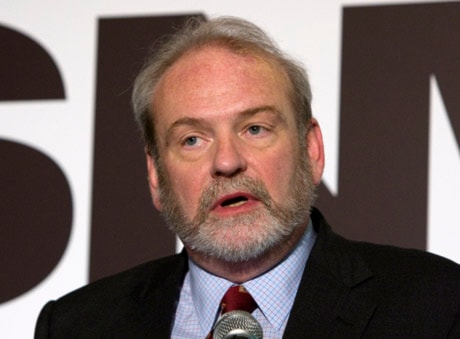TORONTO — The worldwide shortage of radioactive isotopes because of the shutdown of Canada’s Chalk River reactor is perhaps the biggest crisis ever to hit the field of nuclear imaging, says the organization representing the profession.
“Doctors are now scrambling to find the technetium-99 wherever they can,” Robert Atcher, president of the international Society of Nuclear Medicine, said Monday at the group’s annual meeting in Toronto.
“The patient community’s facing one of its greatest threats in modern times — the lack of access to a reliable, consistent supply of the most important medical isotopes used in the effective detection and evaluation of patients with cancer, heart and brain diseases, as well as other disorders,” said Atcher.
In a communique, the society calls on the U.S., Canadian and other governments around the globe to “appropriate the necessary funding” to build new nuclear production facilities and to update existing ones to ensure future supply of medical isotopes.
They also want legislators to make research into alternatives for technetium-99 a top priority, so the nuclear medicine field can shift its dependence away from the most commonly used isotope.
“We have relied on technetium as long as I have been practising medicine,” said Dr. Sandy McEwan of the University of Alberta, who was named special adviser on the issue by federal Health Minister Leona Aglukkaq.
Aglukkaq was scheduled to make an announcement Tuesday in Ottawa regarding federal support for research designed to address demand for medical isotopes. McEwan, who was to meet with the minister Tuesday, declined to talk about the announcement or what he and Aglukkaq planned to discuss.
His job, he said, is to find ways to ensure that all patients in Canada who need nuclear imaging tests “continue to have the best possible access.”
McEwan said that means encouraging better utilization of isotopes; looking at using alternative tests, such as CT and MRI scans, where warranted; and finding alternative radiopharmaceuticals to technetium.
In a growing number of cases, doctors have been forced to turn to different methods of testing because of the isotope shortage, said Atcher. “The danger is that you’ll be using imaging studies that involve more radiation dose to the patient.”
“And potentially they’re less sensitive and accurate in terms of the information we get about the patient. In many cases they’re also more costly and, lastly, they may be much more invasive.”
That’s why the shutdown of the Chalk River reactor has caused such an upheaval in the profession, he said. In fact, a survey of SNM members showed 91 per cent have felt a significant impact in their practice due to the isotope shortage.
Chalk River normally provides more than one-third of the world’s supply of molybdenum-99 — including half of that used by the United States — which is used to generate the radioactive isotope technetium for nuclear imaging.
The Canadian reactor and one in the Netherlands together produce 70 per cent of the world’s medical isotopes, and the Dutch facility will close down in mid-July for a month of scheduled maintenance.
Atcher, a radiopharmaceutical chemist at the Los Alamos National Laboratory in New Mexico, said the loss of the Chalk River reactor — which will be offline for at least three months to repair a heavy-water leak — could affect about eight million tests per year in the United States alone.
There are only five countries with reactors that produce the raw materials for medical isotopes — Belgium, Canada, France, the Netherlands and South Africa — and their reactors on average have been operating for about five decades each.
Australia has a new reactor, but it is not geared up yet to produce Moly-99. When it does, it would only be able to supply about 10 per cent of global needs, Atcher said.
“It’s clear that too many demands are being placed on too few facilities that are simply too old.”
